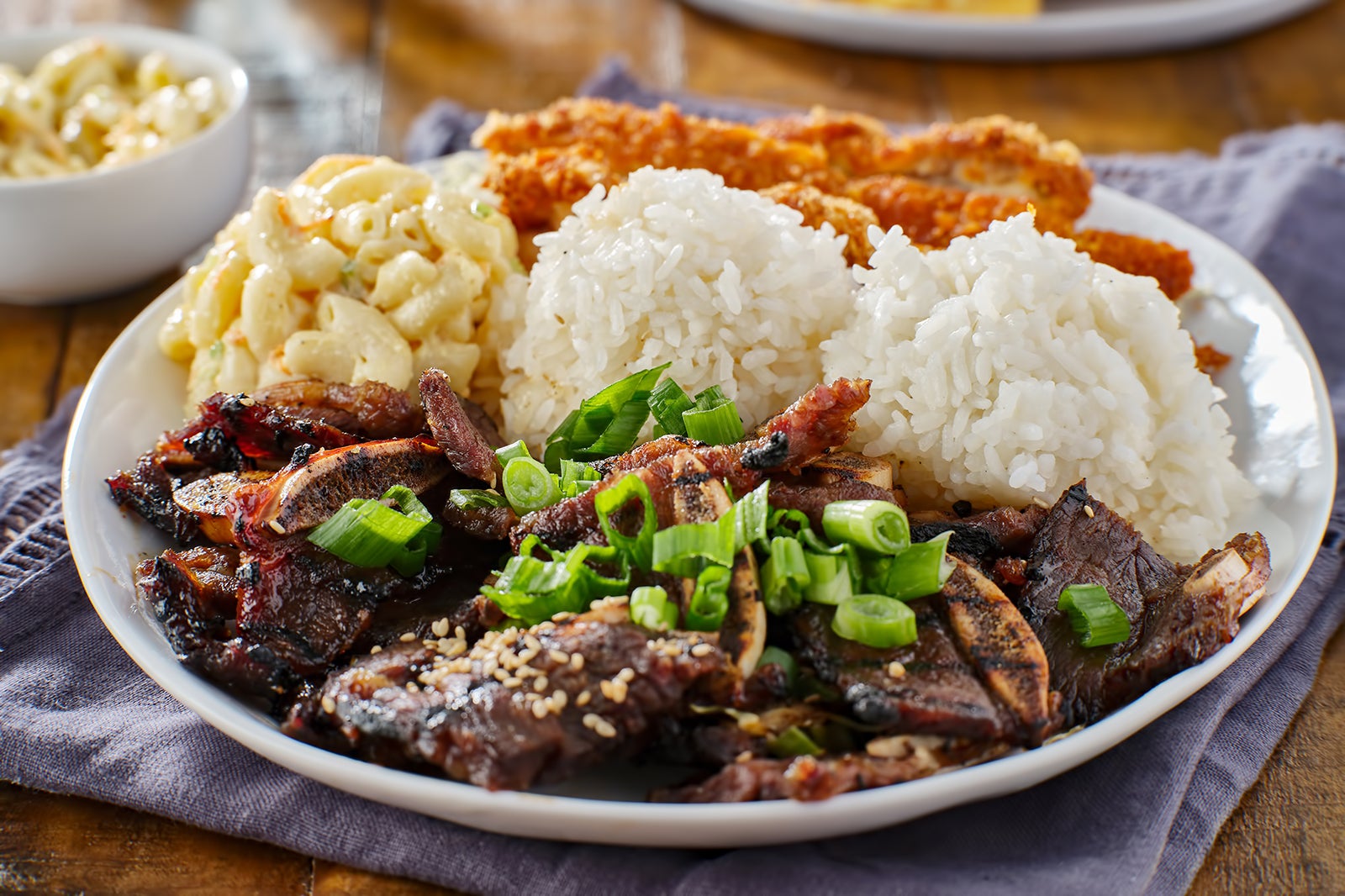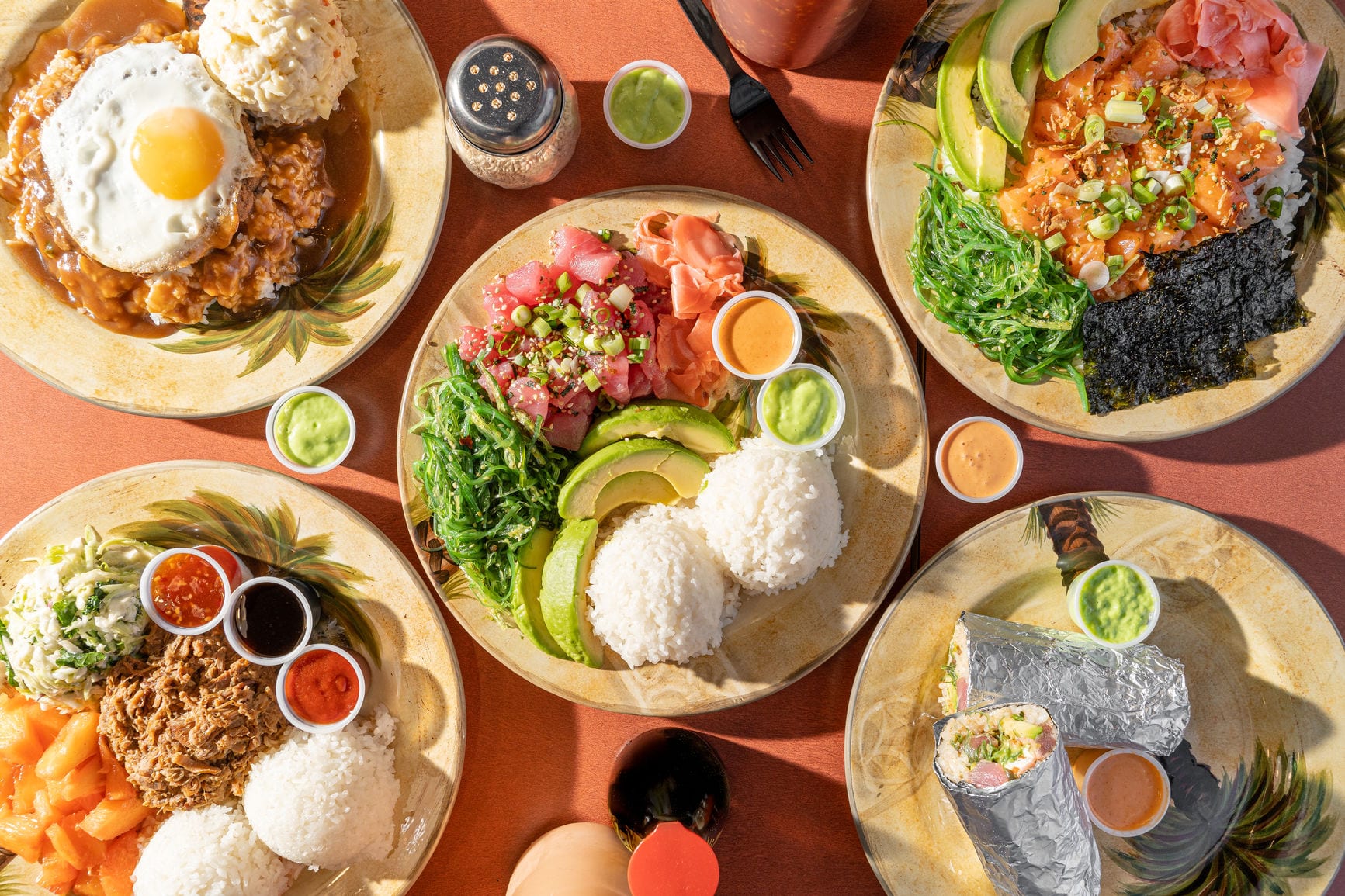Typical Polynesian food is a vibrant and diverse culinary tapestry that reflects the rich cultural heritage and geographical influences of the Pacific islands. From traditional dishes cooked in earth ovens to contemporary fusion cuisine, Polynesian food offers a tantalizing blend of flavors, textures, and cultural significance.
The staples of Polynesian cooking include root vegetables, such as taro and yams, fresh seafood, and tropical fruits. Traditional cooking methods involve steaming, roasting, and grilling, with the “umu” or earth oven playing a central role in many Polynesian cultures.
Definition and Origin of Polynesian Food
Polynesian food encompasses the diverse culinary traditions of the indigenous peoples inhabiting the vast expanse of the Polynesian Triangle, stretching from New Zealand in the southwest to Hawaii in the northeast, and Easter Island in the southeast.
The origins of Polynesian cuisine can be traced back to the Lapita people, who migrated from Southeast Asia to the Pacific islands around 1500 BCE. Over centuries, Polynesian voyagers brought their culinary practices and knowledge of plants and animals to the various islands they settled, leading to the development of distinct regional variations.
Historical Influences
Polynesian cuisine has been influenced by a myriad of historical factors, including:
- Geographical Isolation:The remoteness of the Polynesian islands fostered a reliance on local resources, leading to the development of unique culinary traditions based on available ingredients.
- Cultural Exchange:Contact with other cultures, such as Melanesian and Micronesian peoples, resulted in the exchange of culinary ideas and techniques, enriching the Polynesian culinary repertoire.
- European Colonization:The arrival of European explorers and settlers introduced new ingredients and cooking methods, which were gradually incorporated into Polynesian cuisine, creating a fusion of traditional and modern flavors.
Staple Ingredients and Cooking Methods: Typical Polynesian Food
Polynesian cuisine is characterized by its reliance on fresh, local ingredients and traditional cooking methods that have been passed down through generations. The primary ingredients used in Polynesian cooking include:
- Seafood:Fish, shellfish, and crustaceans are a staple part of the Polynesian diet, providing protein and essential nutrients.
- Coconut:Coconuts are used in a variety of forms, including coconut milk, coconut cream, and coconut oil, adding flavor and richness to dishes.
- Taro:A root vegetable that is a staple food source, providing carbohydrates and fiber.
- Breadfruit:A starchy fruit that can be cooked in various ways, providing a source of carbohydrates and dietary fiber.
- Sweet potato:A sweet and versatile vegetable that is often roasted, boiled, or fried.
Traditional Polynesian cooking methods include:
- Umu (earth oven):An underground oven used to cook food slowly and evenly, imparting a unique smoky flavor.
- Imu (pit oven):Similar to the umu, but smaller and used for smaller quantities of food.
- Lovo (stone oven):Heated stones are placed in a pit, and food is wrapped in leaves and cooked on top of the stones.
- Hangi (steam oven):A pit is dug and lined with leaves, and food is placed inside and covered with more leaves, then steam is generated by pouring water over hot stones.
Significance of the “Umu” or Earth Oven
The umu, or earth oven, holds a significant place in Polynesian culture. It is a traditional method of cooking that has been used for centuries to prepare food for special occasions and community gatherings. The umu is a symbol of community and sharing, as it requires the cooperation of several individuals to build and maintain the fire.
The umu also imparts a unique flavor to food, as the food is cooked slowly and evenly in the underground oven. The smoky flavor of the umu is highly prized in Polynesian cuisine, and dishes cooked in this manner are considered a delicacy.
Popular Dishes and Delicacies
Polynesian cuisine boasts a diverse array of delectable dishes and delicacies, reflecting the region’s rich cultural heritage. From traditional staples to contemporary culinary creations, Polynesian food tantalizes taste buds with its unique flavors and vibrant presentation.
Traditional Delicacies
*
-*Poi
A Polynesian staple, poi is a thick paste made from fermented taro root. It has a slightly sour taste and is often served as a side dish or accompaniment to meat and fish.
-
-*Kalua Pig
A traditional Hawaiian dish, kalua pig is prepared by slow-roasting a whole pig in an underground oven lined with hot rocks. The result is succulent, tender meat with a smoky flavor.
-*Oka
A Fijian delicacy, oka is a raw fish dish marinated in citrus juice, coconut milk, and spices. It is served with vegetables and is known for its refreshing and tangy taste.
Contemporary Creations
*
-*Polynesian Poke Bowl
A modern take on the classic Hawaiian poke, this dish features raw fish marinated in a variety of sauces and topped with vegetables, fruits, and grains.
-
-*Taro Chips
Crispy and flavorful, taro chips are made from thinly sliced taro root that is fried until golden brown. They are often served with dips or as a snack.
-*Mango Sticky Rice
A popular dessert in many Polynesian countries, mango sticky rice is made with sweet glutinous rice topped with ripe mangoes and drizzled with coconut cream.
Cultural Significance
Certain Polynesian dishes hold deep cultural significance. For example, poi is considered a sacred food in Hawaii and is often served at ceremonial occasions. Kalua pig is a traditional dish prepared for special events and is a symbol of hospitality and celebration.
Oka, on the other hand, is a staple in Fijian cuisine and is believed to have medicinal properties.
Regional Variations and Influences

Polynesian cuisine exhibits a fascinating array of variations across different island groups, reflecting the diverse cultural heritage and environmental conditions of each region.
External influences, particularly from Asian and European cuisines, have also left an indelible mark on Polynesian cooking, resulting in a rich tapestry of flavors and techniques.
Regional Culinary Traditions
- Hawaii:Known for its vibrant use of fresh seafood, such as poke (raw fish salad), kalua pig (roasted pig cooked in an underground oven), and poi (pounded taro root).
- Tahiti:Characterized by its use of coconut milk and seafood, as evident in dishes like poisson cru (raw fish marinated in citrus juice) and fafaru (fish soup).
- Tonga:Famous for its traditional feast called ‘umu, which involves cooking food in an underground oven, including dishes like pork, chicken, and taro.
- Samoa:Known for its staple dish of palusami (taro leaves cooked in coconut cream) and oka (raw fish salad).
- Cook Islands:Notable for its use of fermented foods, such as ikamata (fermented breadfruit) and papaya salad.
Influences of Other Cuisines
Polynesian cuisine has been influenced by a variety of other cuisines, including:
- Asian:The use of soy sauce, ginger, and garlic, as well as techniques like stir-frying and steaming.
- European:The introduction of new ingredients such as beef, pork, and wheat, as well as cooking methods like baking and roasting.
Health and Nutritional Aspects

Polynesian cuisine is generally considered nutritious and balanced, providing essential nutrients for overall health and well-being.Polynesian staples like root vegetables, fruits, and fish are rich in vitamins, minerals, and antioxidants. Root vegetables like taro and yams are excellent sources of complex carbohydrates, dietary fiber, and vitamins B and C.
Fruits such as bananas, papayas, and pineapples provide ample amounts of vitamins A, C, and potassium. Fish, a cornerstone of Polynesian diets, is a lean protein source packed with omega-3 fatty acids, essential for heart and brain health.
Traditional Polynesian Ingredients for Medicinal Purposes
Beyond sustenance, many traditional Polynesian ingredients have been used for medicinal purposes for centuries. For example, noni fruit, native to the islands, is believed to have anti-inflammatory and antioxidant properties and has been traditionally used to treat a range of ailments, including pain, infections, and skin conditions.
Turmeric, another common ingredient, possesses anti-inflammatory and antimicrobial properties and has been used to treat wounds, burns, and digestive issues.
Food in Polynesian Health and Well-being, Typical polynesian food
In Polynesian cultures, food holds deep significance beyond its nutritional value. Traditional Polynesian diets emphasize the importance of balance, variety, and moderation. Food is often prepared using fresh, locally sourced ingredients, preserving their nutritional integrity. Communal dining is a central aspect of Polynesian culture, fostering social bonds and reinforcing the importance of shared meals and community well-being.
Cultural Significance and Social Customs

Food holds a profound cultural significance in Polynesian society, deeply intertwined with traditions, rituals, and social interactions.
Ceremonies, Rituals, and Celebrations
Polynesian cuisine plays a pivotal role in various ceremonies, rituals, and celebrations. During sacred occasions, such as weddings, funerals, and religious festivals, food offerings are made to deities and ancestors, symbolizing respect, gratitude, and the continuation of cultural heritage.
Social Customs and Etiquette
Polynesian dining etiquette is rooted in communal sharing and hospitality. The concept of “feaaloafia’i,” or sharing food, fosters a sense of unity and reinforces social bonds. Communal feasts are common, where dishes are prepared and shared among family, friends, and the community.
- Respect for elders: It is customary to offer the first portion of food to elders as a sign of respect.
- Avoidance of waste: Food is considered a gift, and it is considered disrespectful to waste it.
- Taboos: Certain foods may be taboo for specific individuals or during particular periods, based on cultural beliefs and traditions.
Quick FAQs
What are some popular Polynesian dishes?
Some well-known Polynesian dishes include poi (pounded taro root), kalua pig (roasted pig cooked in an earth oven), and poke (raw fish salad).
How does the “umu” or earth oven work?
The “umu” is a traditional Polynesian cooking method that involves digging a pit in the ground and lining it with hot stones. Food is placed on top of the stones and covered with banana leaves and earth, creating a steamy environment that cooks the food slowly and evenly.
What is the cultural significance of food in Polynesian society?
Food holds a central place in Polynesian culture, serving as a means of sustenance, a symbol of hospitality, and a way to connect with ancestors and the natural world.
